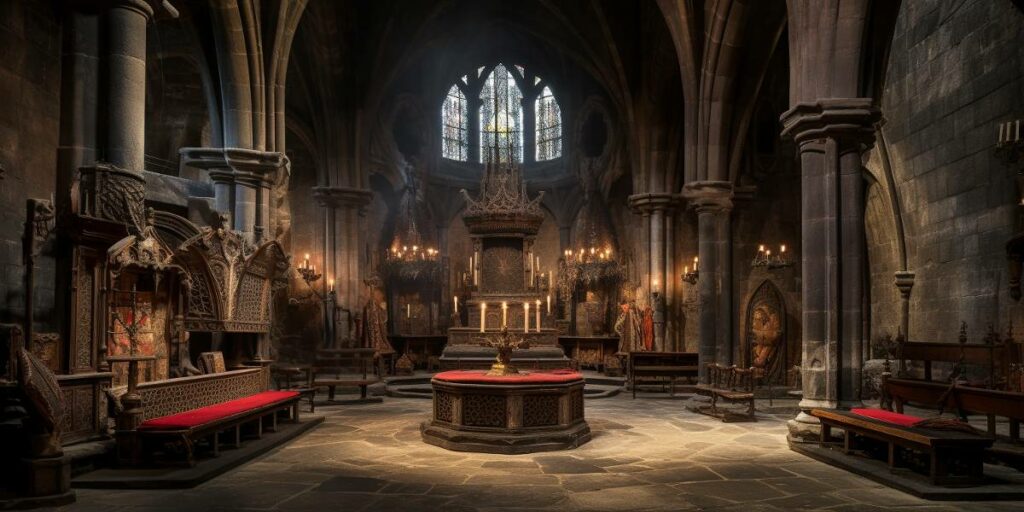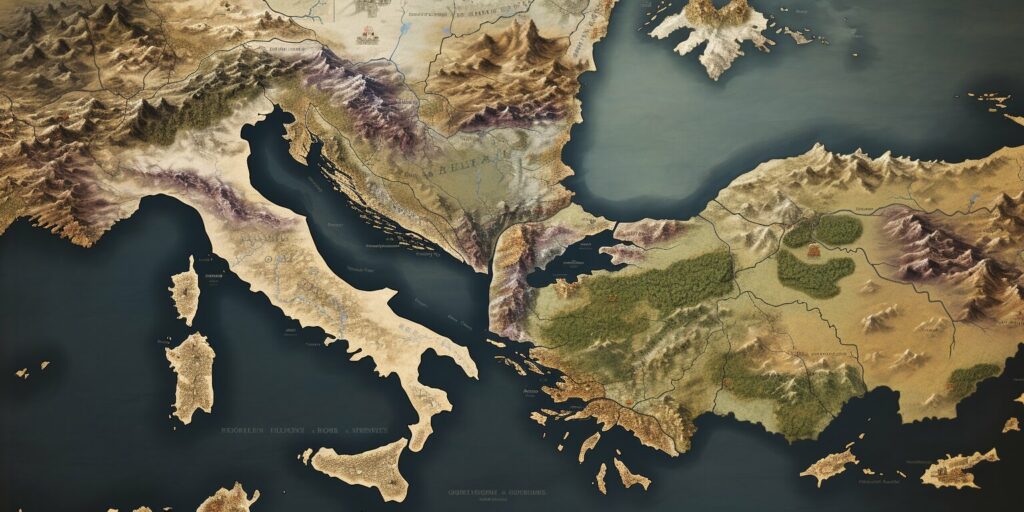During the medieval period, the Holy Roman Empire played a crucial role in shaping the political landscape of Europe. With its rich history and diverse array of rulers, the Holy Roman Empire left an indelible mark on the continent. In this article, we will delve into the intricate political history of the Holy Roman Empire, exploring its formation, evolution, and eventual decline.
The Formation of the Holy Roman Empire
The roots of the Holy Roman Empire can be traced back to the coronation of Charlemagne as the Emperor of the Romans in 800 AD by Pope Leo III. This event marked the revival of the idea of a unified Roman Empire in Western Europe. Charlemagne’s empire, known as the Carolingian Empire, laid the groundwork for the eventual formation of the Holy Roman Empire.
On Christmas Day in the year 800, Pope Leo III crowned Charlemagne as Emperor of the Romans, signaling the revival of the Roman Empire in the West. The coronation also solidified the close relationship between the Carolingian rulers and the papacy, setting the stage for the holy alliances that would come to define the Holy Roman Empire.

Credit: knightstemplar.co
The Reign of Otto the Great
One of the most influential figures in the history of the Holy Roman Empire was Otto the Great, who reigned as Emperor from 962 to 973. Otto’s reign marked a turning point in the empire’s history, as he expanded its borders and centralized its administration. He also sought to strengthen the alliance between the imperial authority and the church, laying the foundation for the empire’s unique political structure.
Under Otto’s rule, the Holy Roman Empire reached its zenith, encompassing vast territories and exercising significant influence over European affairs. Otto’s efforts to consolidate power and establish diplomatic relations with neighboring kingdoms set the stage for the empire’s prominence in medieval Europe.
Political Structure of the Holy Roman Empire
The political structure of the Holy Roman Empire was characterized by a complex system of governance that encompassed a diverse array of territories and rulers. At its core, the empire was a confederation of semi-autonomous states, each with its own ruler, laws, and customs. The Emperor, elected by a council of powerful nobles and ecclesiastical leaders, acted as the supreme authority, but his power was often limited by the autonomy of the member states.
Furthermore, the close relationship between the Holy Roman Emperor and the Catholic Church played a pivotal role in shaping the empire’s political landscape. The Investiture Controversy, a protracted conflict between the Emperor and the papacy over the appointment of bishops and church officials, underscored the intricate balance of power between state and church within the empire.
The Decline of the Holy Roman Empire
Despite its early successes, the Holy Roman Empire began to experience a gradual decline in the later medieval period. The rise of powerful regional lords, internal conflicts, and external pressures from neighboring kingdoms all contributed to the erosion of the empire’s authority and unity.
The Thirty Years’ War (1618–1648) further weakened the empire, leading to widespread devastation and loss of life. The conflict, fueled by religious and political tensions, exposed the inherent weaknesses of the empire’s decentralized political structure and ultimately hastened its decline.

Credit: brill.com
Legacy of the Holy Roman Empire
Despite its eventual dissolution in 1806, the Holy Roman Empire left a lasting legacy that continues to resonate in the annals of European history. Its impact on the development of political institutions, the concept of a unified European identity, and the interaction between secular and religious authority has endured through the ages.
The empire’s complex and multifaceted political history serves as a testament to the enduring power struggles and alliances that characterized medieval Europe. The legacy of the Holy Roman Empire continues to be studied and debated by historians, offering valuable insights into the evolution of political systems and the dynamics of power in the medieval era.
In Conclusion
The Holy Roman Empire stands as a poignant example of the complexities of medieval political history. From its inception as a revival of the Roman Empire to its eventual decline, the empire’s political landscape was marked by a delicate balance of power, intricate alliances, and incessant struggles for authority.
By examining the formation, reign of influential figures such as Otto the Great, political structure, decline, and lasting legacy, we gain a deeper understanding of the intricate web of politics that defined the Holy Roman Empire. The empire’s impact on European history is undeniable, and its story serves as an enduring testament to the complexities of medieval politics.
Frequently Asked Questions Of Medieval Political History Holy Roman Empire: Unveiling The Dynamics Of Governance
What Was The Holy Roman Empire Known For?
The Holy Roman Empire was known for its complex political structure, consisting of various kingdoms, principalities, and territories, and for its influence on medieval European history.
How Long Did The Holy Roman Empire Last?
The Holy Roman Empire lasted for about a millennium, from 800 AD to 1806 AD.
Who Was The Ruler Of The Holy Roman Empire?
The Holy Roman Empire had multiple rulers throughout its existence, including famous emperors such as Charlemagne, Frederick Barbarossa, and Maximilian I.
What Were The Major Achievements Of The Holy Roman Empire?
The Holy Roman Empire made significant contributions to the development of European legal systems, architecture, and culture. It also played a crucial role in shaping the balance of power in medieval Europe.
Guest Author Sakhawat-Shuvo wrote and edited this Article based on his best knowledge and understanding. These opinions and remarks are not endorsed or guaranteed by epichistoria.com or EpicHistoria. The Epic Historia does not guarantee this article’s content. Readers should verify and use their judgment before trusting the content. Also, the Images used in this Article are the copyright of their Respective Owners. Please use our Comment Box or Contact Us form to report this content. This information is not accountable for losses, injuries, or damages.

